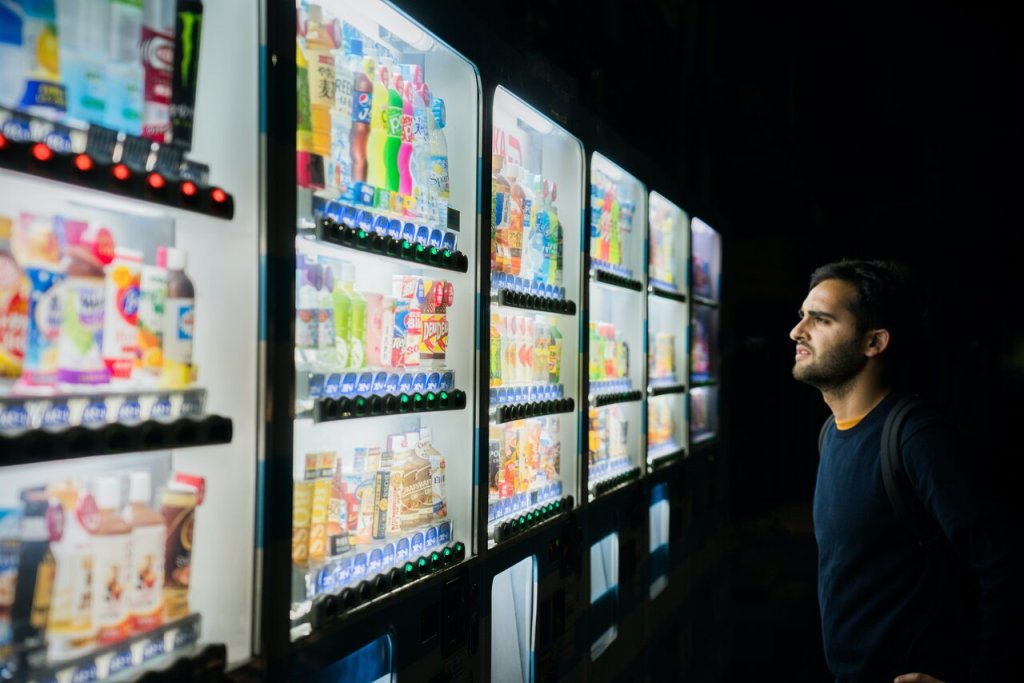Landscape of the Energy Drink Market
The energy drink market is experiencing unprecedented growth, fueled by changing consumer preferences and lifestyle trends. In the past year, the energy drink market has seen more than $22 billion in sales.1 That’s a 9.9% gain over the previous year, showing the sustained strength of energy drinks in the ready-to-drink aisle.1 Key players in the industry continue to dominate the market with their innovative product offerings and extensive marketing campaigns. However, the landscape is also witnessing the emergence of smaller, niche brands catering to specific consumer segments, such as organic, natural, and low-sugar energy drinks. As consumers become more health-conscious and seek functional beverages, FMCG manufacturers are under pressure to adapt and innovate to meet evolving demands.
Moreover, the COVID-19 pandemic reshaped the energy drink market, with consumers increasingly prioritizing convenience and on-the-go consumption. This shift has led to the rise of ready-to-drink formats and single-serve packaging options, catering to busy lifestyles and the need for quick energy boosts. Additionally, the pandemic-induced disruptions in supply chains and distribution channels have prompted manufacturers to explore alternative sourcing strategies and invest in robust logistics networks to ensure uninterrupted product availability. As the energy drink market continues to evolve, manufacturers must stay vigilant and agile to capitalize on emerging opportunities and navigate potential challenges effectively.
4 Key Energy Drink Trends
With the energy drink market burgeoning, many brands want to get in on the action. But, it can be hard to know what trends are worth jumping on for your brand. Luckily, there are a few major trends impacting the fresh category that all brands should keep their eyes on.
With that in mind, here are 4 key trends impacting energy drink growth:
1. Health and Wellness Demands
Today, there is a growing focus on living healthier, and many consumers are reevaluating what’s good for them, their future, and their bodies. This is leading to an increase in physical activity, which directly benefits the sales of energy drinks, especially those with increased caffeine levels. Last year, food and beverage searches for “contains caffeine” grew 17%, and searches for “high caffeine” saw a 113% increase.2 Many energy drink brands are well-positioned to leverage these developing wellness trends and grow market share in the wellness industry.
It’s not all about addition, though. Consumers are also looking to subtract some foods and ingredients from their diets, which can be seen in the shift away from sugar to artificial and natural sweeteners. According to NIQ data, 30% of consumers seek low sugar when buying food and beverages, and 29% look for no added sugar.3 This offers a unique opportunity for energy drink brands that offer low-sugar or sugar-free options to grow as the trend continues.
2. Innovation is Hitting the Mark
In today’s market, sitting back and waiting for success isn’t a viable option. Instead, innovation is a catalyst to success for brands big and small. In the last year, there were 258 new item launches in the energy drink category, many with unique functional claims and ingredients.4 As shoppers’ criteria for purchase continue to shift and vary across demographics, a strong innovation pipeline can help energy drink brands stay relevant.
Continuous innovation can help companies break through by supporting the bottom line and boosting overall growth during times of volumetric slowdown. In fact, NIQ data shows that manufacturers growing innovation sales in 2022 were 1.8x more likely to grow overall sales than those with stagnant or declining innovation sales.5 Innovation can be a driver of growth, and its impact can be exponential, but it needs to be done thoughtfully if you want your energy drink brand to stand out from the pack.

5 Key Habits of Successful FMCG Brands
The markets are still challenged with inflation, shifting demand, and more.
But some CPG brands are rising above the rest to gain market share and build the foundation for a stronger future. To help you better understand how they’re achieving their goals, we’ve compiled some of the key habits we’ve seen across the spectrum in an easy-to-read eBook for you.

3. Different Trends by Channel
Energy drink sales are up across the board, but different channels are growing at different rates. Volume, dollar growth, and velocity for energy drinks in Value stores outpace more traditional channels.4 Meanwhile, volume growth lags in C-Store, but distribution is strong.4 Clearly, energy drink brands are facing different challenges and opportunities across their distribution points.
Consumers are also approaching their purchases differently by channel. For example, 82% of energy drink shoppers in C-Store plan their purchases ahead of time, while only 73% of energy drink shoppers in Mass plan their purchases.6 This means different promotional methods will be more effective depending on the channel. In an omnichannel marketplace, energy drink brands need to understand how their consumers shop by channel and how they can maximize their value.
4. The Challenge of “Instant Hydration”
Energy drinks aren’t the only beneficiaries of the revised focus on health and wellness in the U.S. Instant Hydration products had $543M in dollar sales in the past year.7 That’s a +73% CAGR over three years ago.7 This means that energy drink brands have stiffer competition for consumers seeking hydration after engaging in strenuous physical activity.
This growth is occurring across a range of product forms. Unfortunately, the fastest growing category is Instant Hydration powder products, generating $467M in dollar sales, up 37% over last year.7 Energy drink manufacturers don’t benefit from this growth and need to find ways to accurately position their products to combat these products. By properly utilizing promotional marketing and product attributes, energy drink brands can stay on top and meet these shifting consumer demands.
How to Adapt to Emerging Energy Drink Trends
As the energy drink market continues to expand, FMCG manufacturers face the challenge of adapting to emerging trends to maintain their competitive edge. Key players in the market have capitalized on innovative product offerings and strategic marketing campaigns to dominate shelf space. However, the landscape is evolving, with smaller, niche brands gaining traction by catering to specific consumer segments such as organic, natural, and low-sugar energy drinks. With consumers increasingly prioritizing health and wellness, manufacturers must innovate to meet evolving demands while navigating the impact of the COVID-19 pandemic on consumption habits and distribution channels.
To thrive in this dynamic environment, energy drink brands must stay abreast of emerging trends and consumer behaviors. Moreover, understanding the nuances of different sales channels and consumer shopping behaviors is essential for optimizing promotional efforts and maximizing value. With competition intensifying from products offering instant hydration solutions, energy drink brands must differentiate themselves through targeted marketing and product attributes to meet shifting consumer demands effectively. By embracing these trends and leveraging data-driven insights, manufacturers can position themselves for sustained growth and success in the evolving energy drink market landscape.

Make Your Energy Drink Brand Trend-proof with NIQ
2024 offers energy drink brands the opportunity to grow by adapting to shifting consumer behaviors and optimizing their strategies. But if you don’t have the right data and insights, you’re likely to fall behind. NIQ offers a range of solutions and expert insights to support brands of all sizes.
Emerging brands can start their journey with a free Byzzer™ subscription, NIQ’s platform built for emerging brands and their budgets. Free access gets you 3 free reports and a weekly alert to get you started with data. Byzzer™ provides breakdowns of a wide range of attributes and markets in easy-to-digest reports.
Best of all, we’ll show you how to leverage this information for your action plan. It’s never too early to start acting on data.
Interested in more valuable insights like these?
Sources:
1 NIQ, Omni Sales – 52 weeks ending March 30, 2024
2 NIQ Label Insight Trending Attributes search data; All Channels; 12 Months, October 2022 – September 2023
3 NIQ, Retail Measurement Services – NIQ Product Insight, powered by Label Insight; Total US xAOC; Total Food & Beverage; $ % Change vs year ago; 52 weeks ending November 4, 2023 (Added Sugar) and 52 weeks ending 12/30/23
4 NielsenIQ Total US xAOC + Convenience, 52 W/E 2/17/2024 vs YA. *Value channel defined as Mass + Club + Dollar retailers.
5 NIQ BASES Innovation Measurement. ^ 60k innovations X 5 countries x 4+ years
6 NIQ BASES Omnichannel Shopping Fundamentals (Fall 2023) survey dataset
7 NielsenIQ Total US xAOC + Conv during L52W/E 3/2/24




